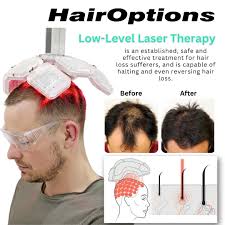Hair loss & balding solution
Hair loss and balding affect millions of people worldwide, regardless of gender or age. While genetics play a significant role, several lifestyle, hormonal, and environmental factors also contribute to this condition. Fortunately, there are many scientifically-backed treatments and solutions that can help slow down or even reverse hair loss. In this article, we explore the causes, solutions, and expert opinions to provide a complete picture.

1. Understanding the Root Causes of Hair Loss
Hair loss can be triggered by various reasons:
Genetics (Androgenetic Alopecia): The most common cause, known as male or female pattern baldness.
Hormonal Imbalance: Conditions like thyroid issues, PCOS, or menopause in women can lead to thinning.
Stress and Lifestyle: Chronic stress, poor diet, lack of sleep, or smoking can accelerate hair loss.
Nutrient Deficiencies: Lack of iron, Vitamin D, zinc, and protein directly affects hair health.
Autoimmune Conditions: Such as alopecia areata, where the immune system attacks hair follicles.
2. Medical Treatments (Minoxidil & Finasteride)
These are FDA-approved and widely recommended:
Minoxidil (Rogaine): A topical solution that stimulates blood flow to hair follicles. Effective for both men and women.
Finasteride (Propecia): An oral drug for men that blocks DHT, a hormone that causes hair follicles to shrink.
3. PRP Therapy (Platelet-Rich Plasma)
PRP therapy involves drawing the patient’s blood, processing it to isolate platelets, and injecting it into the scalp.
Mechanism: Platelets release growth factors that encourage follicle regeneration.
Benefits: Non-surgical, natural, and effective with minimal side effects.
4. Hair Transplant Surgery
Ideal for people with significant balding:
FUT (Follicular Unit Transplantation) and FUE (Follicular Unit Extraction) are the two main types.
Success Rate: Over 90% when performed by experienced professionals.
Cost: High but long-lasting and more natural-looking.
5. Nutritional Support & Supplements
Balanced nutrition plays a key role in hair health:
Biotin: Supports keratin production.
Iron and Zinc: Essential for cell repair and follicle health.
Omega-3 & Vitamin D: Reduce inflammation and support follicle growth.
Many dermatologists recommend a supplement routine tailored to lab test results to avoid over-supplementation.
6. Laser Hair Therapy
Low-Level Laser Therapy (LLLT) is an FDA-cleared treatment:
Mechanism: Stimulates cellular activity and increases blood circulation in the scalp.
Devices: Helmets, combs, or caps that can be used at home.
Limitation: Works best in early stages of hair thinning.
7. Natural & Holistic Approaches
Some prefer herbal or lifestyle-based remedies:
Onion juice, rosemary oil, and castor oil have anecdotal success.
Yoga and stress management can help in hormonal balance.
Scalp massage improves circulation and strengthens follicles.
8. Psychological Support & Acceptance
Hair loss can affect self-esteem. It’s important to:
Seek counseling or support groups.
Consider styling alternatives like wigs or cosmetic hair fibers.
Embrace acceptance — confidence often makes more impact than hair.
Expert Dialogue: A Deep Conversation Between Dermatologists
Dr. Ayesha Khan (Trichologist):
“In many patients, the psychological impact is more damaging than the hair loss itself. That’s why early consultation is crucial — we can prevent severe loss if we act on time.”
Dr. Rizwan Malik (Dermatologist):
“Absolutely. Minoxidil and finasteride have revolutionized hair care, but they’re not magic bullets. They require commitment. I also emphasize blood testing — a lot of patients have undiagnosed iron or Vitamin D deficiencies.”
Dr. Ayesha:
“I’ve also seen great results with PRP, especially in younger patients with recent hair thinning. However, it’s not a one-time miracle. Most people need multiple sessions and maintenance every 6–12 months.”
Dr. Rizwan:
“And let’s not forget hair transplant — for someone with established bald patches, it can change lives. But the patient must have realistic expectations. It’s still a surgical procedure, and aftercare is critical.”
Dr. Ayesha:
“Very true. On another note, more men are opting for laser caps now. The LLLT technology has matured and provides good results if used consistently.”
